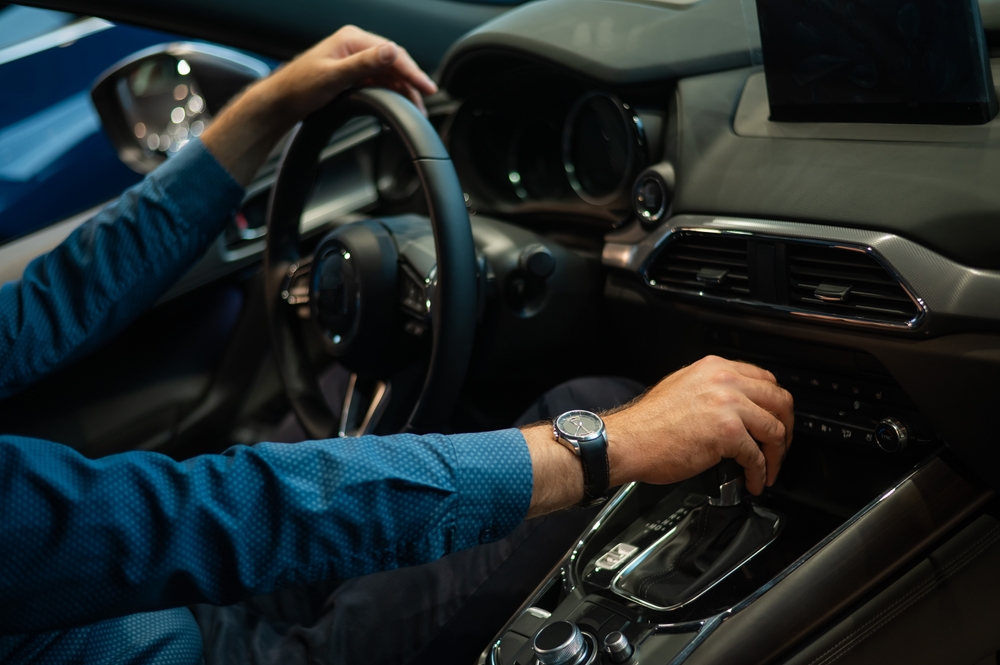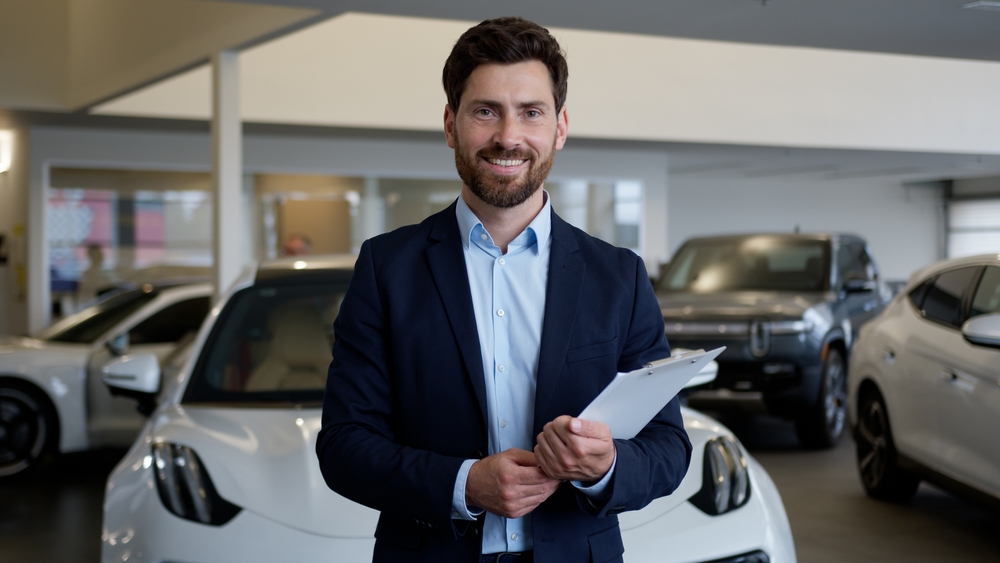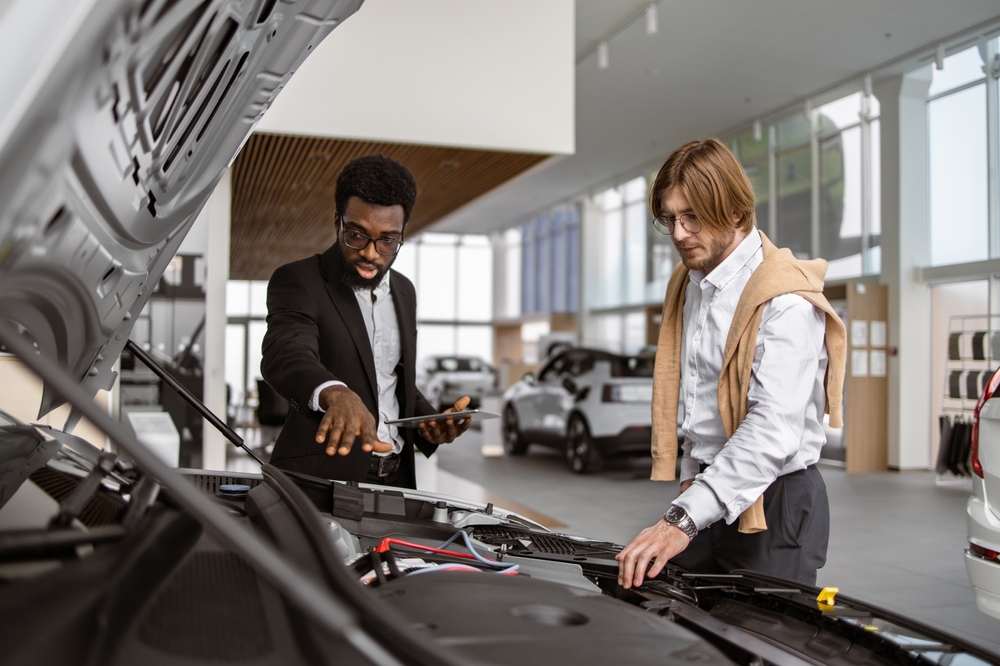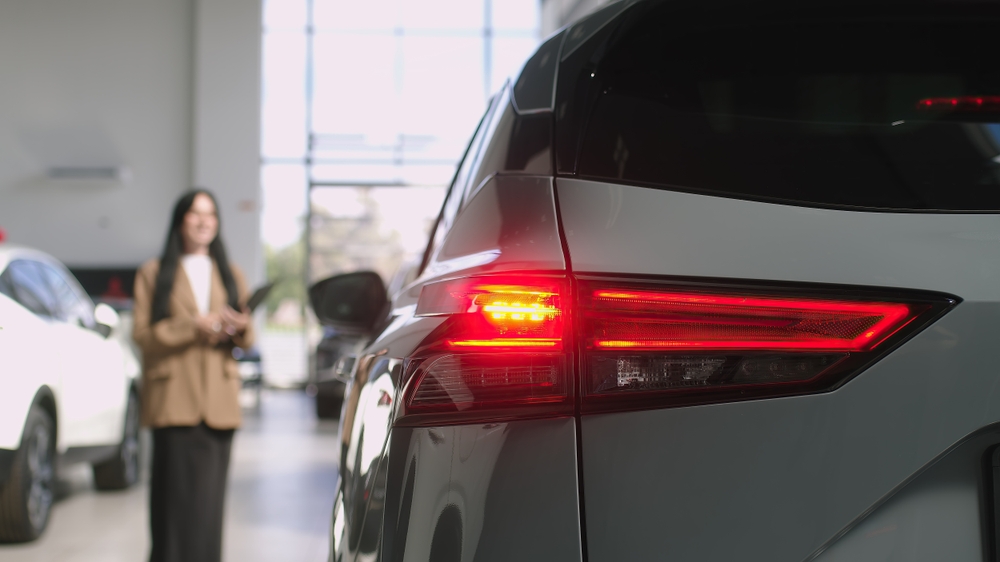
Blog

Why Combining Digital and Direct Mail Marketing is a Game-Changer for Dealerships
Introduction: The New Era of Automotive Marketing
Selling cars isn’t what it used to be. Today’s car buyers are more informed and connected than ever. They research online, read reviews, and compare prices long before they ever step into a showroom. This shift requires dealerships to rethink their marketing strategies. A simple newspaper ad or a standalone social media campaign no longer cuts it. To capture attention and drive sales, you need a smarter, more integrated approach.
This is where the powerful combination of digital marketing and traditional direct mail comes into play. By blending the high-tech reach of online ads with the tangible impact of a physical mailer, you can create a marketing machine that works harder for your dealership. This guide will explore why this hybrid strategy is a true game-changer, helping you attract more customers, book more appointments, and ultimately, sell more cars.
Shifting Customer Behaviors in 2025
The modern car-buying journey is complex. A potential customer might see your Facebook ad on their phone during their lunch break, visit your website on their tablet that evening, and then look for a local dealership on Google Maps the next day. They expect a smooth and consistent experience across all these touchpoints. They value personalization and want to feel that you understand their specific needs, whether they’re looking for a family SUV or a sporty coupe. This behavior means your marketing must be present and consistent wherever your customers are.
Why Dealerships Must Adapt
Dealerships that stick to old, siloed marketing methods risk becoming invisible. If your online presence doesn’t connect with your offline efforts, you’re leaving money on the table. Adapting to this new landscape means embracing a strategy that covers all the bases. It’s about creating a cohesive brand story that a customer experiences from their mailbox to their mobile screen. Those who adapt successfully will not only survive but thrive, building stronger customer relationships and a more resilient business model.
What is Omnichannel Marketing for Car Dealerships?
You may have heard the term “omnichannel marketing” before. In simple terms, it means creating a single, unified experience for your customers across all your marketing channels. It’s not just about being on multiple platforms; it’s about making those platforms work together seamlessly. For a car dealership, this could mean a customer receives a direct mail piece about a trade-in event and scans a QR code that takes them to a personalized landing page where they can get an instant estimate for their vehicle.
Defining Omnichannel vs Multichannel
It’s easy to confuse omnichannel with multichannel marketing, but there’s a key difference. Multichannel is when you use several channels to talk to your customers, but the channels don’t talk to each other. For example, you might run a radio ad and a separate email campaign. They both reach customers, but they operate independently.
Omnichannel, on the other hand, puts the customer at the center of the strategy. All channels are linked to create a continuous conversation. The email campaign knows about the direct mail piece, and the website reflects the offer from the social media ad. This integration makes the customer’s journey feel effortless and connected.
Creating a Seamless Customer Journey
A seamless customer journey is the ultimate goal of omnichannel marketing. Imagine this: a customer receives a postcard with a special offer for a new truck. They scan the QR code and are taken to your website, where they see a video of that exact truck. They browse your inventory and later see a retargeting ad on their social media feed reminding them of the offer. The next day, they get an email with an invitation to a test drive event. Every step feels connected and logical, guiding them smoothly from initial interest to a visit to your showroom. This is the power of a truly integrated strategy.
The Benefits of Digital Marketing for Auto Dealers

Digital marketing is an essential tool for any modern dealership. It allows you to reach a massive audience with precision, measure your results instantly, and engage with customers in real time. From search engines to social media, the digital world offers countless opportunities to connect with potential buyers.
SEO and PPC for Car Dealerships
Search Engine Optimization (SEO) and Pay-Per-Click (PPC) advertising are the cornerstones of digital marketing for dealers. SEO helps your website rank higher on Google when people search for terms like “used cars near me” or “Ford dealership in [Your City].” Good SEO drives organic traffic to your site, which is essentially free advertising.
PPC, on the other hand, involves paying for ads that appear at the top of search results. This is a great way to get immediate visibility for specific promotions, like a holiday sales event or a new model arrival. Together, SEO and PPC ensure that your dealership is visible whenever a customer is actively looking for a vehicle.
Social Media Ads and Engagement
Platforms like Facebook, Instagram, and TikTok are where your customers spend a significant amount of their time. Running targeted ads on these platforms allows you to reach specific demographics based on location, interests, and even recent life events (like having a new baby). Beyond ads, social media is a powerful tool for building a community around your brand. You can share customer testimonials, behind-the-scenes looks at your dealership, and helpful car care tips to build trust and engagement.
Email Marketing for Lead Nurturing
Once you have a potential customer’s email address, you have a direct line of communication. Email marketing is perfect for lead nurturing—the process of building relationships with potential buyers who aren’t ready to purchase just yet. You can send them personalized offers, service reminders, and newsletters with valuable content. This keeps your dealership top-of-mind, so when they are ready to buy, you’re the first one they call.
The Lasting Power of Direct Mail Campaigns

While digital marketing gets a lot of attention, direct mail remains one of the most effective tools for car dealerships. In an age of overflowing digital inboxes, a physical piece of mail stands out. It’s something tangible that customers can hold, read, and keep.
Tangibility Builds Trust and Recall
A well-designed mailer can make a lasting impression. Unlike a digital ad that can be scrolled past in a second, a physical mail piece often sits on a counter or table, serving as a constant reminder of your dealership and its offers. Studies have shown that physical advertisements create a stronger emotional response and are easier for the brain to process and recall later. This tangibility builds a sense of trust and legitimacy that can be difficult to achieve online.
Hyper-Local Targeting for Showroom Traffic
One of the greatest strengths of direct mail is its ability to target specific geographic areas with incredible accuracy. You can send mailers to certain neighborhoods, zip codes, or even specific streets. This hyper-local targeting is perfect for driving showroom traffic. Are you hosting a special weekend event? Send a postcard to everyone within a 10-mile radius. This focused approach ensures your marketing budget is spent on reaching the people most likely to visit your dealership.
Why Digital and Direct Mail Work Better Together
This is where the magic really happens. When you combine the broad reach and data-rich environment of digital marketing with the tangible, trust-building power of direct mail, you create a synergy that amplifies the results of both. They are not competing channels; they are complementary parts of a holistic dealership marketing strategy.
Reinforcing Messages Across Channels
Repetition is key to memory. When a customer sees the same message in their mailbox and in their social media feed, it reinforces your brand and your offer. This dual exposure makes your campaign much more memorable. For instance, a direct mail piece announcing a “Trade-In, Trade-Up” event can be followed by digital ads targeting the same audience, reminding them of the deadline and featuring images of new inventory. This consistent messaging across channels builds momentum and urgency.
Boosting Conversion Rates with Dual Touchpoints
Engaging a customer through both a physical and digital touchpoint dramatically increases the likelihood of conversion. The direct mail piece captures their attention, and the digital follow-up provides an easy way to take action. This one-two punch is incredibly effective. For example, a mailer can drive them to your website, and once they’re there, you can use digital tools to capture their information, schedule a test drive, or provide a trade-in valuation. Each channel makes the other one more effective.
Key Strategies to Combine Digital and Direct Mail Marketing
Integrating your digital and direct mail efforts doesn’t have to be complicated. Here are a few proven strategies to get you started.
Using QR Codes and Personalized URLs
This is one of the simplest yet most effective ways to bridge the gap between offline and online. Including a QR code or a personalized URL (PURL) on your direct mail piece gives customers an instant path to a digital experience. A PURL, like YourDealership.com/John-Smith, can take a customer to a landing page pre-filled with their information, making it incredibly easy for them to respond to your offer.
Syncing Mail Drops with Online Ads
Timing is everything. Coordinate your marketing efforts so that your direct mail pieces arrive in homes at the same time your digital ad campaign launches. This creates a concentrated burst of marketing that dominates the customer’s attention for a short period. This synchronized approach ensures your message is seen multiple times across different channels, maximizing its impact.
Retargeting Mail Respondents with Digital Offers
What happens after someone responds to your mailer? You can use the data you collect to retarget them online. For example, if someone scans a QR code for a specific SUV, you can show them digital ads featuring that exact vehicle or similar models. This highly relevant follow-up is a powerful way to move customers further down the sales funnel.
Real-World Examples of Omnichannel Success in Dealerships
These strategies sound great in theory, but do they actually work? Absolutely. Dealerships across the country are seeing incredible results by integrating their marketing efforts.
Dealerships Increasing Trade-In Appointments
One dealership wanted to boost its used car inventory. They sent out a direct mail campaign offering a bonus trade-in credit. The mailer included a QR code that led to a custom landing page with a trade-in valuation tool. As soon as a customer filled out the form, their information was sent to the BDC, who followed up with a call to schedule an appointment. Simultaneously, a digital ad campaign retargeted anyone who visited the landing page but didn’t fill out the form. The result was a 40% increase in trade-in appointments in just one month.
Driving More Test Drives Through Hybrid Campaigns
Another dealership was launching a new electric vehicle. They started with a direct mail piece sent to a list of environmentally conscious consumers in their area. The mailer featured stunning imagery of the new EV and invited recipients to a special VIP test drive event. A few days later, they launched a Facebook ad campaign targeting the same group of people with a video of the car in action and a one-click button to RSVP for the event. The combination of the high-impact mailer and the easy-to-use digital RSVP drove a record number of attendees to their event.
Measuring the ROI of an Integrated Marketing Campaign
One of the biggest advantages of an omnichannel approach is its trackability. By linking your offline and online efforts, you can get a much clearer picture of what’s working and what’s not.
Tracking Response Rates Across Channels
Using tools like QR codes, PURLs, and unique phone numbers allows you to track exactly how many people are responding to your direct mail campaigns. You can see how many people visited your website, filled out a form, or called your dealership as a direct result of the mailer. This data is invaluable for calculating your return on investment (ROI).
Attribution Models for Accurate Insights
Attribution is the science of assigning credit to the different touchpoints in a customer’s journey. With an integrated campaign, you can see the entire path a customer took. Did they first see a Facebook ad, then receive a postcard, and finally click on a Google ad? Understanding this journey helps you allocate your marketing budget more effectively, investing more in the channels that are delivering the best results.
Common Mistakes to Avoid in Omnichannel Marketing
While the benefits are huge, there are a few common pitfalls to watch out for when implementing an omnichannel strategy.
Sending Generic Messages Without Segmentation
One of the worst mistakes you can make is sending the same generic message to everyone. Your customers are not all the same, and your marketing shouldn’t be either. Use the data you have to segment your audience and send them offers that are relevant to their needs and interests. A family with young kids will respond to a different message than a recent college graduate.
Ignoring Consistency in Branding
Your branding should be consistent across every single channel. That means using the same logos, colors, fonts, and tone of voice in your mailers, on your website, in your emails, and on your social media posts. Inconsistency can confuse customers and weaken your brand identity. A strong, consistent brand presence builds recognition and trust.
Conclusion: Future-Proofing Your Dealership with a Hybrid Approach
The way customers buy cars has changed for good. To succeed in this new environment, dealerships need a marketing strategy that is as dynamic and adaptable as their customers. Relying on a single channel is no longer an option.
Building Long-Term Customer Loyalty
An omnichannel strategy is not just about making a single sale; it’s about building long-term relationships. By providing a seamless and personalized experience, you show your customers that you value their business. This builds a level of trust and loyalty that keeps them coming back for service, future purchases, and referring to their friends and family.
Why Omnichannel is the Future of Auto Marketing
Combining the proven power of direct mail with the precision and reach of digital marketing is the future of the automotive industry. This hybrid approach allows you to engage customers on their terms, wherever they are. It’s a game-changer that delivers measurable results, from increased showroom traffic to higher sales figures. By embracing an omnichannel strategy, you can future-proof your dealership and drive sustainable growth for years to come.









